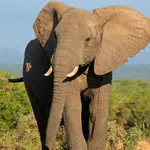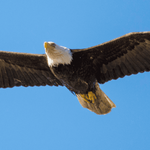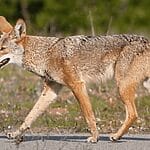Unveiling nature’s olfactory champions, this article delves into the fascinating world of animal senses. Discover which creatures possess the most acute sense of smell and how it’s pivotal for their survival. From tracking prey to intricate social communications, we explore the biological marvels behind these sensational abilities.
Key Takeaways:
- Bloodhounds possess an exceptional number of olfactory receptors, making them unparalleled in tracking scents over long distances, which is invaluable in search and rescue operations and law enforcement.
- African elephants use their large trunks, which are highly sensitive to scents, for social communication, foraging, and predator detection, playing a crucial role in their survival within the matriarchal society.
- Polar bears rely on their acute sense of smell to detect seals under several feet of snow and ice, a vital skill for hunting in the Arctic environment, especially as climate change impacts their habitat.
- The turkey vulture has a highly developed sense of smell, allowing it to detect carrion from miles away while soaring high above the ground, playing a vital role in the ecosystem as a scavenger.
- Sharks’ olfactory lobes are so developed that they can detect a single drop of blood in millions of gallons of water, enabling them to track prey across vast ocean distances and maintain their role as apex predators.
What Animal Has the Best Sense of Smell?
The African elephant has a highly developed sense of smell, utilizing its large trunk to detect scents for communication and survival.
Ranking the Best Animal Senses of Smell
When venturing into the animal kingdom to uncover which creature boasts the most remarkable sense of smell, one must consider several biological factors. Olfactory sensitivity, the ability to detect and differentiate between odors, sits at the heart of this exploration.
It hinges on the number of olfactory receptors an animal possesses, as well as the size and complexity of its olfactory bulb, the brain region responsible for processing smells.
Additionally, some animals are equipped with a Jacobson’s organ, a specialized structure that enhances their ability to detect pheromones, the chemical signals critical for communication and survival.
These biological mechanisms collectively contribute to an animal’s olfactory prowess and serve as the criteria for ranking their sense of smell.
How Olfactory Abilities Are Measured in Animals
Measuring and comparing these olfactory abilities across species is a complex task. Behavioral assays, which observe an animal’s response to specific scents, provide insights into their sense of smell.
Electro-olfactograms record the electrical activity of olfactory receptor cells when exposed to odors, offering a direct measurement of olfactory function.
Gas chromatography isolates and identifies the chemical components of an odor, while olfactometry quantifies an animal’s sensitivity to these compounds. Neuroimaging techniques, such as MRI, allow researchers to visualize the olfactory system in action and understand how different smells are processed in the brain.
These methods, however, come with challenges. The subjective nature of smell and the difficulty in creating controlled environments for testing can affect the accuracy and reliability of results. Moreover, the vast diversity of olfactory systems across species makes direct comparisons challenging.
Despite these limitations, advancements in technology and methodology continue to refine our understanding of animal olfaction. By studying these creatures and their remarkable olfactory abilities, we gain a deeper appreciation for the intricate ways in which life on Earth has evolved to interact with the environment through the power of scent.
Diverse Species with Notable Olfactory Abilities
| Animal Group | Examples | Olfactory Abilities | Significance of Smell |
| Birds | Turkey Vultures | Detect carrion from miles away while soaring high above the ground. | Crucial for scavenging lifestyle, ecosystem cleaners. |
| Fish | Salmon | Use sense of smell to locate natal rivers for spawning. | Natal homing crucial for species continuation. |
| Insects | Silk Moths | Male silk moths sense female pheromones from several miles away. | Important for mating rituals and silk industry. |
| Reptiles | Snakes | Use Jacobson’s organ to ‘taste’ the air, effectively smelling their surroundings. | Efficient in tracking prey, navigating, and mating. |
| Amphibians | Olms | Rely on sense of smell to navigate and find food in complete darkness. | Key adaptation for survival in subterranean cave ecosystems. |
Mammalian Olfactory Champions
The world of mammals is replete with creatures whose lives are deeply intertwined with their sense of smell. These animals boast remarkable anatomical and physiological adaptations that not only allow them to detect a vast array of scents but also to interpret and respond to them in ways crucial for their survival.
Nasal turbinates, intricate structures within the nasal cavity, increase the surface area for scent detection. The olfactory epithelium, lined with millions of receptors, captures odor molecules, while the vomeronasal organ plays a pivotal role in detecting pheromones.
Scent glands secrete substances that communicate information to other animals, aiding in everything from foraging to predation.
Bloodhounds: The Scent-Tracking Specialists

Bloodhounds are the quintessential scent-tracking specialists. With their droopy ears and wrinkled skin, they may look endearing, but their olfactory system is a marvel of nature.
These scent hounds have more olfactory receptors than almost any other breed, making them unparalleled in their tracking abilities. Historically bred for hunting deer and wild boar, today they are invaluable in law enforcement and search and rescue operations. Their ability to follow a scent trail for miles, even days after it was laid, is not just impressive; it saves lives.
African Elephants: Large Noses with a Powerful Function
African elephants are another example of mammalian olfactory excellence. Their large trunks serve as multifunctional organs with an acute sense of smell.
Within their matriarchal society, elephants use this powerful function for social communication, foraging, and detecting predators. The trunk’s nuanced ability to discern a vast range of scents is essential in the vast landscapes of Africa, where visual cues are often obscured by distance or terrain.
Bears: Polar Bears and Their Remarkable Smell for Hunting
Polar bears depend on their sense of smell to survive in the harsh Arctic environment. They can detect seals, their primary prey, beneath several feet of compacted snow and ice.
This remarkable ability is critical for hunting, especially during the long winter months when visual hunting is nearly impossible. However, as climate change leads to ice melting, polar bears are forced to adapt their hunting strategies, with their olfactory skills becoming even more vital.
Rodents: Star-Nosed Moles and Rats’ Sensitive Noses
Rodents like star-nosed moles and rats possess sensitive noses that are integral to their survival. The star-nosed mole, with its distinctive star-shaped nose, uses its tactile and olfactory organ to navigate and forage in murky environments. Rats, often seen as pests, actually play a crucial role in ecosystems.
Their keen sense of smell allows them to detect a wide range of scents, which aids in everything from finding food to avoiding danger.
Suidae Family: Pigs’ Surprising Olfactory Skills
Pigs, members of the Suidae family, have surprising olfactory skills. Their powerful noses are not just for rooting in the dirt; they can locate food, recognize individual pigs, and detect pheromones, which is essential for their complex social structure.
In agriculture, pigs’ sense of smell is beneficial for truffle hunting, turning them into valuable partners for those seeking the prized fungi.
Other Notable Mammals: Hedgehogs, Elephant Shrews, and Opossums
Hedgehogs, elephant shrews, and opossums may not be the first animals that come to mind when considering olfactory champions, but their sense of smell is key to their way of life.
Hedgehogs use their noses to sniff out insects and other small prey. Elephant shrews, with their elongated snouts, rely on their sense of smell for foraging in the underbrush. Opossums, nocturnal foragers, depend on their olfactory abilities to locate food and avoid predators in the dark.
Each of these mammals showcases the incredible diversity and specialization of the olfactory system, demonstrating that a keen sense of smell is as varied as it is widespread in the animal kingdom.
Whether it’s tracking a lost person, foraging for food, or communicating within a complex social structure, these animals’ olfactory capabilities are finely tuned to their lifestyles and environments, making them true champions of the mammalian world.
Avian Species with Acute Smell

It’s a common belief that birds rely primarily on their keen eyesight and hearing, but this overlooks the sophisticated olfactory abilities of many avian species.
Contrary to popular opinion, several birds have highly developed olfactory systems, which they use for a variety of purposes, including olfactory foraging, navigation, carrion feeding, nesting behavior, and following migratory patterns.
These abilities offer evolutionary advantages and play significant ecological roles, allowing these birds to interact with their environment in ways that are often underestimated.
Turkey Vultures: Masters of Smelling Carrion from Above
Take the turkey vulture, for instance, a bird that has turned the scent of decay into a fine art. With olfactory abilities that can detect carrion from miles away, turkey vultures are able to locate their next meal while soaring on thermals high above the ground.
This keen sense of smell is crucial for their scavenging lifestyle, allowing them to cover large areas in their search for decaying animals. As ecosystem cleaners, they play a vital role in maintaining the health of their environment by disposing of carcasses that could otherwise spread disease.
Kiwis: Ground Birds with a Developed Sense of Smell
The kiwi, a bird native to New Zealand, presents a unique case in the avian world. With nostrils located at the tip of its beak, the kiwi’s anatomy is specially adapted for sniffing out food on the forest floor.
This adaptation is particularly beneficial for their nocturnal foraging habits, as they search for insects and other invertebrates in the darkness. The kiwi’s reliance on its sense of smell is a defining trait of its biology and has implications for conservation efforts, as the bird is an endangered species.
Protecting the kiwi’s habitat is crucial, not only for the survival of this distinctive bird but also for the preservation of the ecological balance in New Zealand’s forests.
Birds like the turkey vulture and kiwi challenge the misconception that avian species lack a strong sense of smell. Their olfactory capabilities are a testament to the diverse and remarkable adaptations found in nature, demonstrating that even in the sky—or close to the ground—smell can be just as important as sight or sound.
These birds’ acute sense of smell is a key factor in their survival and success, and it continues to intrigue and inspire researchers and bird enthusiasts alike.
Aquatic Life and Olfactory Abilities
In the aquatic world, where light penetrates only so far, smell becomes a crucial sense for survival. Aquatic animals have evolved sophisticated olfactory systems to detect chemical signals in water, a process known as chemoreception.
This ability allows them to track prey, find mates, and navigate through the vast and often murky waters they inhabit. Water currents carry these chemical cues, such as pheromone trails, which can lead to food sources or potential partners.
Predatory behavior in many marine creatures is heavily reliant on these olfactory cues, as is the spawning migration of various species that must find their way back to their birthplaces to reproduce.
Sharks: Detecting Prey with a Scent Trail in the Ocean
Sharks are often portrayed as the ultimate ocean predators, and their sense of smell is a key factor in this reputation. They can detect a single drop of blood in millions of gallons of water, tracking this scent trail across vast distances.
The olfactory lobes of a shark are highly developed, allowing them to hone in on the faintest of smells. While the idea of a shark-induced feeding frenzy is sensationalized, their olfactory capabilities are indeed formidable and vital for their role in marine ecosystems.
Shark conservation efforts often highlight the importance of understanding these creatures’ senses to better protect them.
The life cycle of salmon is a testament to the power of olfactory navigation. These fish embark on an incredible journey, using their sense of smell to locate their natal rivers where they will spawn.
This phenomenon, known as natal homing, is crucial for the continuation of their species. However, challenges such as river pollution and physical barriers like dams have made this journey more difficult. Fish ladders and other conservation measures are being implemented to help salmon complete their spawning migration.
Catfish: Utilizing Whiskers to Sense Food in Murky Waters
Catfish are masters of murky waters, relying on their barbels, or ‘whiskers,’ to sense their environment. These barbels are equipped with taste receptors that detect minute chemical changes, guiding catfish to their food.
As bottom feeders, they play a significant role in aquatic ecosystems, helping to keep water bodies clean. Their olfactory skills also make them a valuable target for commercial fishing, as they are a staple in many diets around the world.
Insect Olfactory Systems
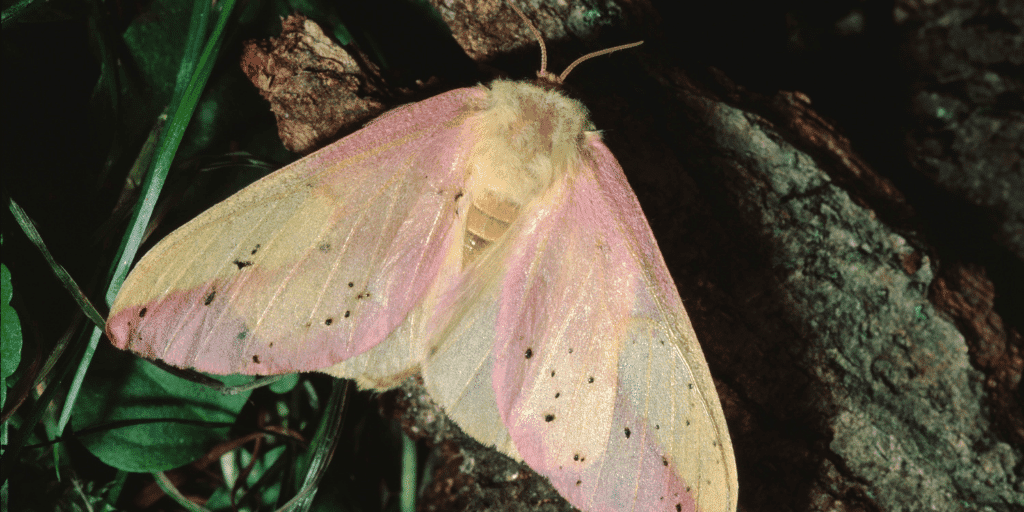
Insects may be small, but their olfactory systems are nothing short of extraordinary. These tiny creatures rely heavily on their sense of smell for a variety of critical behaviors that ensure their survival and reproduction.
Their antennae serve as sophisticated sensory organs, housing a multitude of receptors that are fine-tuned to detect specific chemical signals. Pheromone communication is particularly vital in the insect world, facilitating complex interactions such as mating, foraging, and establishing colony hierarchy.
Pollination, a key process in the reproduction of many plants, is also guided by the olfactory cues that insects follow to find flowers. Mating behavior, too, is often driven by scent, ensuring that insects can locate suitable partners for reproduction.
Silk Moths: Pheromone Detection for Mating
Silk moths are renowned for their ability to detect female pheromones from incredible distances. Male silk moths can sense these chemical signals from several miles away, guiding them to potential mates.
This remarkable feat of pheromone detection is not only fascinating from a biological standpoint but also has significant implications for the silk industry.
Understanding the mating rituals of silk moths is crucial for silk production, as it can influence the management and cultivation of these valuable insects. Additionally, the study of silk moth behavior contributes to broader insect behavior research, offering insights into the complexities of chemical communication.
Honey Bees: Chemical Communication and Smell
Honey bees are a prime example of the sophisticated use of smell in insect communication. Their society is highly organized, and pheromones play a central role in coordinating activities within the hive.
From the queen’s pheromones that regulate colony behavior to the scent markers that foragers use to signal the location of food sources, chemical communication is integral to the functioning of the hive.
When foraging, honey bees use their keen sense of smell to locate flowers, playing a pivotal role in pollination and the health of ecosystems. The olfactory abilities of honey bees are not only crucial for their survival but also for the continuation of many plant species.
Reptiles and Amphibians with Keen Smell
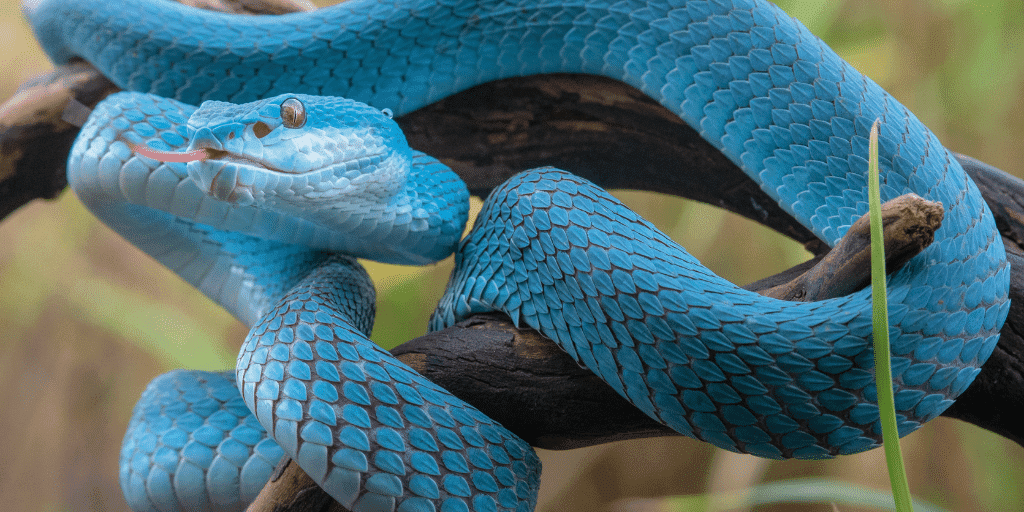
Reptiles and amphibians may not be the first creatures that come to mind when considering the sense of smell, but many species within these groups have highly developed olfactory abilities.
These animals utilize smell to navigate their environments, locate prey, avoid predators, and communicate with potential mates. The Jacobson’s organ, a chemosensory structure found in many reptiles and some amphibians, is particularly important for processing scent information.
This organ enhances their ability to detect prey, interpret mating signals, and engage in territorial marking. Predator avoidance is another critical aspect of their olfactory capabilities, allowing them to sense danger and react accordingly.
Snakes: Using Jacobson’s Organ to ‘Taste’ the Air
Snakes are fascinating reptiles with a unique approach to olfaction. They use their forked tongues to collect chemical cues from the air and then press the tips of their tongues to the Jacobson’s organ, located in the roof of their mouths.
This action effectively allows them to ‘taste’ the air around them. This hunting strategy is incredibly efficient, enabling snakes to track prey, navigate their surroundings, and even detect the presence of other snakes for mating purposes.
The forked nature of their tongues also provides them with a directional sense of smell, helping them pinpoint the exact location of the scent source.
The olm is a remarkable example of an amphibian that has adapted to life in complete darkness. These blind aquatic creatures inhabit subterranean cave systems, where they rely on their sense of smell to find food and navigate the pitch-black environment.
The olm’s olfactory abilities are a key adaptation for survival in cave ecosystems, compensating for their lack of vision. Their heightened sense of smell allows them to detect the presence of prey and other olms in the water, ensuring they can feed and reproduce despite the challenges of their habitat.
Reptiles and amphibians exhibit a diverse array of olfactory adaptations that are crucial for their survival. From the hunting tactics of snakes to the subterranean lifestyle of olms, these creatures demonstrate the importance and versatility of the sense of smell across different species and environments.
The Role of Smell in Animal Behavior and Survival
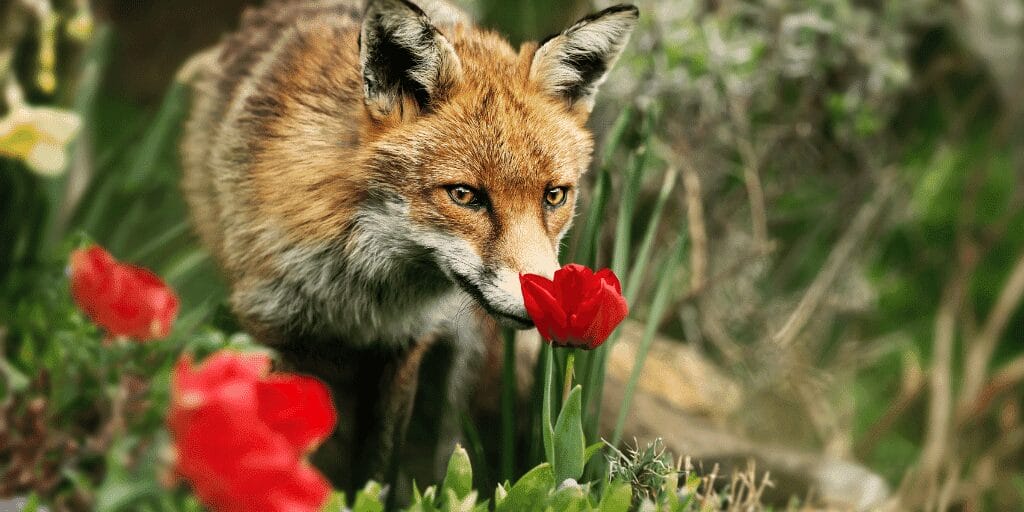
The sense of smell is a fundamental aspect of animal behavior and survival, influencing a wide range of activities from foraging to complex social interactions. This powerful sense has been honed through millions of years of evolutionary adaptation, enabling animals to make critical decisions that affect their survival and reproductive success.
Olfactory cues guide animals in locating food, selecting mates, maintaining social hierarchies, and navigating predator-prey interactions. The evolutionary significance of these behaviors is profound, as they contribute to the fitness and adaptability of species in diverse environments.
Foraging and Hunting: How Smell Drives Feeding Behaviors
Animals depend on their sense of smell to find sustenance, whether they are foraging for plants, hunting prey, or scavenging. This sense helps them distinguish between nutritious and toxic substances, ensuring they consume what is safe and beneficial.
For predators, the smell is a crucial element of hunting strategy, allowing them to track and locate prey even when it is out of sight. Scavengers, such as vultures and hyenas, rely on their acute sense of smell to find food that other animals cannot detect, playing an essential role in the ecosystem by recycling nutrients.
Mating and Reproduction: The Role of Scent in Finding Partners
Scent plays a pivotal role in the mating rituals of many animals. Pheromones, chemical signals released by individuals, convey information about reproductive status and genetic compatibility.
These olfactory messages can attract potential partners from great distances and are a key factor in sexual selection. The ability to detect and respond to these cues is often linked to reproductive success, influencing mate choice and the propagation of genetic traits within a population.
Social Interactions: Smell for Communication and Hierarchies
In the realm of social animals, scent is a primary mode of communication. Many species use olfactory signals to establish and maintain social hierarchies, mark territories, and recognize kin. Scent marking can convey a range of information, including an individual’s identity, social status, and reproductive condition.
This form of communication is especially prevalent in species with complex social structures, such as wolves, elephants, and primates, where it plays a crucial role in maintaining order and cohesion within groups.
Predation and Defense: Using Smell to Avoid Danger
The sense of smell is also integral to an animal’s defensive strategies. Prey species have evolved to detect predators through olfactory cues, often allowing them to avoid danger before it is visible. Some animals use scent to camouflage themselves or to deter threats through the release of noxious chemicals.
Additionally, olfactory signals can trigger escape behaviors, prompting animals to flee from potential harm. These survival strategies underscore the importance of smell in the natural world, where it often means the difference between life and death.
The sense of smell is deeply embedded in the fabric of animal life, influencing behaviors that are essential for survival and reproduction. It is a testament to the intricate and interconnected nature of ecosystems, where every sense and signal plays a part in the delicate balance of life.





